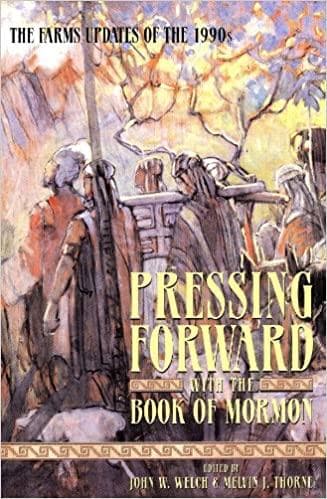Book
69 Chapters

“The law was engraven upon the plates of brass.” (1 Nephi 4:16)
In the spring 1994 issue of the Journal of Book of Mormon Studies, I described the discovery, unwrapping, and translation of silver plates found in a Jerusalem burial site that dates just before the Babylonian captivity.1 This time frame is that of Lehi and his family. The importance of this find for Book of Mormon studies is that sacred texts were written on precious metal plates, and thus Lehi’s search for the plates of Laban and his writing on precious metal plates are real possibilities.
A recent issue of Biblical Archaeology Review gives additional importance to these plates in the article “Ten Great Finds,” by Michael D. Coogan.2 Dr. Coogan was asked to sift through all the archaeological finds in Palestine and determine the ten most significant for biblical archaeology. In doing so he tried to list finds that are representative of whole areas of endeavors. For example, one of his choices was the Gibeon water system. Not only is it a marvel by itself, but it also represents other engineering feats of the Israelites.
Coogan selected these plates as one of his ten great finds because, in the overall picture of biblical archaeology, they “are the earliest inscriptions containing a text also found in the Bible.”3 These texts represent the work of scribes, such as those of the Dead Sea Scrolls, who preserved the Bible for us. He concludes that the significance of the texts “is inversely proportionate to their size, for they are our earliest witnesses to the text of the Bible.”4
This discovery is every bit as important for the Book of Mormon. Nephi reported in the sixth century B.C. that the plates of brass from Jerusalem contained “the five books of Moses” (1 Nephi 5:11). Now, from the same time and place comes another “plate,” inscribed in a very small script, that preserves words not only from a biblical text, but even more so from the Mosaic book of Numbers.
Research by William J. Adams Jr., originally published in the Journal of Book of Mormon Studies 4/2 (1995): 136–37.
1. See William J. Adams Jr., “Lehi’s Jerusalem and Writing on Metal Plates,” Journal of Book of Mormon Studies 3/1 (1994): 204–6.
2. See Michael D. Coogan, “Ten Great Finds,” Biblical Archaeology Review 21/3 (1995): 36–47.
3. Ibid., 45.
4. Ibid.
Book
69 Chapters
Items in the BMC Archive are made publicly available for non-commercial, private use. Inclusion within the BMC Archive does not imply endorsement. Items do not represent the official views of The Church of Jesus Christ of Latter-day Saints or of Book of Mormon Central.